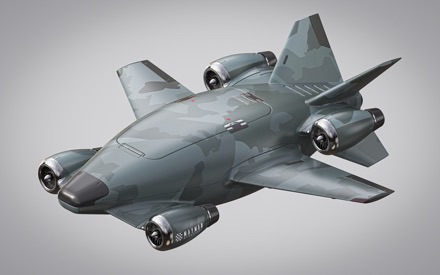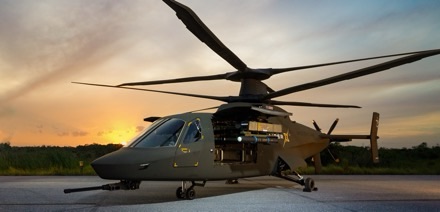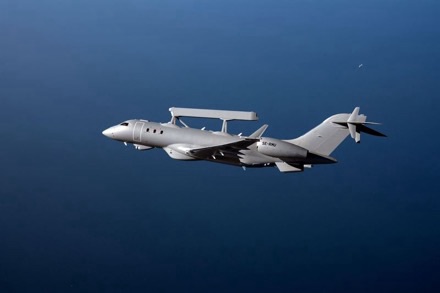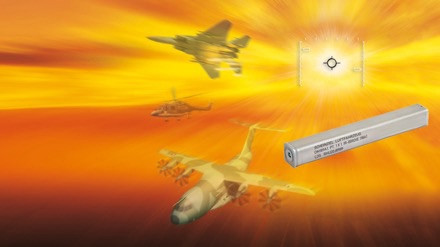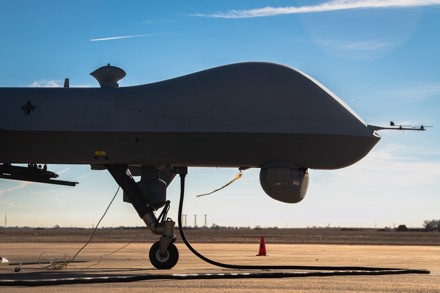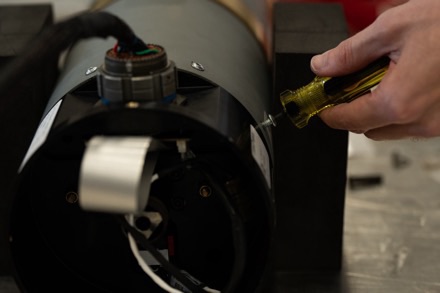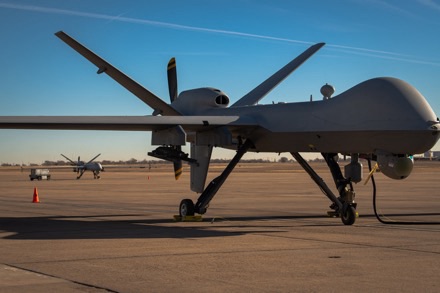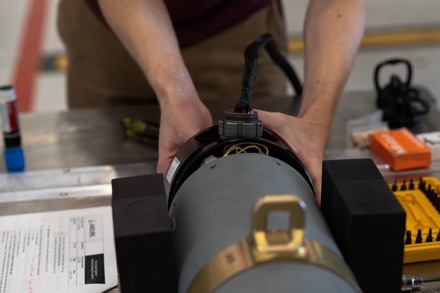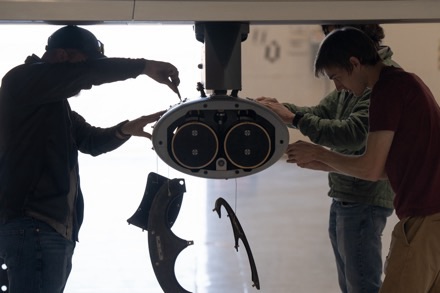
FORT NOVOSEL, Ala. — More than 200 U.S. Army Aviation leaders from across all Army components gathered at the home of Army aviation to discuss warfighting issues facing the branch, Jan. 23-25, 2024.
With a theme of “Transforming Aviation Warfighting, Strengthening the Sacred Trust”, the 2024 Aviation Senior Leader Forum’s three days of guest speaker and breakout sessions focused on current and future operations, training and leader development.
Event host Maj. Gen. Michael C. McCurry, the U.S. Army Aviation Branch chief, welcomed attendees and provided a branch update.
“Welcome, everybody, to the Aviation Senior Leader Forum, the only branch forum mandated in regulation,” he said, referencing Army Regulation 95-1.
He lauded the former branch leaders in the crowd and encouraged current leaders to seize the opportunity to learn from them.

“I wouldn’t be here today without a lot of these folks over here, and neither would a lot of the people sitting in the front row,” McCurry said.
“The dialogue is more important than what’s on the slides. The challenges we face in Army aviation every day out there in your [combat aviation brigades] and formations have been seen before, we have been here before. These warfighters over here, these warriors — some say gray beards — they have been there and had to fight their way through friction, and so your job is to be a sponge and glean from these warfighters everything.”
He also lauded the vital role of the branch’s enlisted corps as he recognized Command Sgt. Maj. Stephen H. Helton, U.S. Army Combined Arms Center and Fort Leavenworth command sergeant major.
“We’re a pretty tight family in Army aviation. We all know none of us would be here without our enlisted Soldiers. Back in (the early 1990s), 1st Lt. McCurry and Pfc. Helton were in the same platoon. And for the last few years we have been the beneficiaries of his leadership at the Combined Arms Center as the command sergeant major. I want to make sure we recognize him, as a branch.”

McCurry explained his own responsibilities as a leader as three functions: Fort Novosel senior commander, force modernization proponent for aviation and senior trainer for Army aviation.
In Army aviation, “nothing’s really changed in what we do, we have the same set of core competencies,” which he condensed into the categories of see/sense, strike, move and extend.
“We increase the lethality and survivability of the combined arms team,” McCurry said.
In the future fight, first contact should be made with unmanned systems, he said.
“When the explosion of (unmanned aircraft systems) happened in the COIN fight, when many of us were battalion commanders, it was really about seeing, it was about persistence, it was about watching one IED engagement zone or one building looking for a high value target. Today with the explosion of unmanned systems, we’re using them in every function,” he said.
The branch is looking at future changes to medical evacuation, including extended casualty care and buddy care on the battlefield, and potentially employing UAS for blood transport.
The branch is also looking at aviation’s role in providing robust capabilities to extend the Army’s ability to command and control its forces.
“Let us never be mistaken (to think) that army aviation exists for itself,” McCurry said, explaining that the branch’s sole purpose is to support the Soldier on the ground.
McCurry also discussed the data solicited last year in the wake of aviation mishaps.

“Many of you that had meetings scheduled with me saw those cancelled on the last day of [the aviation association forum] last year because I was with Gen. McConville and we were working a plan on the aviation standdown as we looked at the series of accidents we had,” McCurry said.
“We collected data … all of you held standdowns … and you fed comments up. We tallied every comment, how many times certain things came up. We took all that collected data that bubbled up from the CABs and briefed the vice who is now our chief. We had every division and corps commander on the net,” he said.
“We identified with division and corps commanders the follow-on actions for the enterprise to take in the near, mid and far-term to get after increasing safety,” as he explained the data chart.
“For CAB commanders, the outcome was more engagement and ownership by your division commanders. They are engaged, they are reading what’s coming out, their DCG’s are getting the action items to follow up, so that’s a positive. We have to keep that momentum going,” he said.
He emphasized that the branch will not compromise on standards and called upon leaders to continue to focus on the fundamentals and understanding and managing risk, as the branch transforms to support the joint force in large-scale combat operations of the future.
Chief of Staff of the Army Gen. Randy A. George, who joined the forum through video conference, called for readiness at every echelon.
“As a leader, I have been dealing with, or being supported by aviation formations my entire career. I’m always proud of our aviation branch. I think it’s one of the strongest aspects of our Army, it always has been,” George said.
“There’s so many things that we can learn from aviation. I always use maintenance as a perfect example of that … a formation that is disciplined and knows how to get after that, so appreciate all of your leadership,” he said.
He described the volatile current world situation that people can readily see on the news daily.
“What’s different about where we’re at right now is just all the regional conflicts that we have going on around the world, in eastern Europe, in the Middle East, what’s happening out in the Pacific, and everywhere else,” and how quickly those could flare up into global conflict, he explained.
George described four focus areas for the force, including warfighting, delivering ready combat formations, continuous transformation and strengthening the Army profession.
“I want to make sure your formations understand that one of the things that you are going to be laser focused on is how you can make your formation more lethal, and your teams more cohesive,” he said.
George said he prefers the word transformation rather than modernization, because it indicates changes with people and tactics, techniques and procedures that have to change just as much as materiel, he explained.
He also said it’s critical that formations maintain discipline and standards that have been the “hallmark of effective units on the battlefield since the beginning of time.”
Gen. Gary Brito, who commands the U.S. Army Training and Doctrine Command, also joined the event virtually. He emphasized support to Army-level imperatives, including warfighting, delivering combat ready formations and continuous Army transformation.
Brito said the onus is on leaders to help eradicate harmful behaviors and strengthen the profession.
“In everything you do as a leader, help us continue to keep our Army strong,” he said. “We as leaders own this — to reinforce the commitment, the competence, the candor, the character, the whole bit that makes our Army strong.”
He called for leaders to put everything they can into quality training.
“All echelons, all systems, all staffs, must work towards being adaptive, innovative, lethal in this new [multidomain operations/large-scale combat operations] environment,” he said.
What TRADOC owes the Army is trained and ready Soldiers and leaders who are brilliant at the basics, educated on the threat, who fight as a team, are resilient and adaptive and trusted by America, he explained.
“I’m very comfortable with the leaders that are represented in the room to make this happen, regardless of the patch that you have on,” Brito said. “We are all professionals. We all have responsibility … to build that bench before us and help our chief and the secretary of the Army with their priorities in the future.”
Gen. Daniel R. Hokanson, National Guard Bureau chief, who had just returned from a trip to Poland, joined to provide an update.
“The Guard has got to look exactly like the Army,” Hokanson said. “For those outside the military that may not be familiar I constantly have to remind them that the reason the National Guard exists is to fight and win our nation’s wars. That is our sole mission. But because we are manned, trained and equipped to fight wars, we can do just about anything else. You see this in aviation literally every day.”
To make sure Guard aviation is on par and in the same modernization process as the active Army, every unit needs to directly support a division or corps, Hokanson explained.
The lineup of speaker sessions included updates from the Aviation Branch command sergeant major and chief warrant officer, as well as various members of the aviation enterprise such as the U.S. Army Aviation and Missile Command, the director of Army Aviation – Army G-3/5/7, Future Vertical Lift Cross Functional Team/Army Futures Command and Program Executive Office-Aviation.
The event also provided updates from U.S. Army North, the U.S. Army Combat Readiness Center, Human Resources Command and Army Reserve Aviation Command, as well as the Directorate of Evaluation and Standardization and Directorate of Training and Doctrine at the U.S. Army Aviation Center of Excellence.
By Kelly Morris



